Specialists and generalists in coastal heath
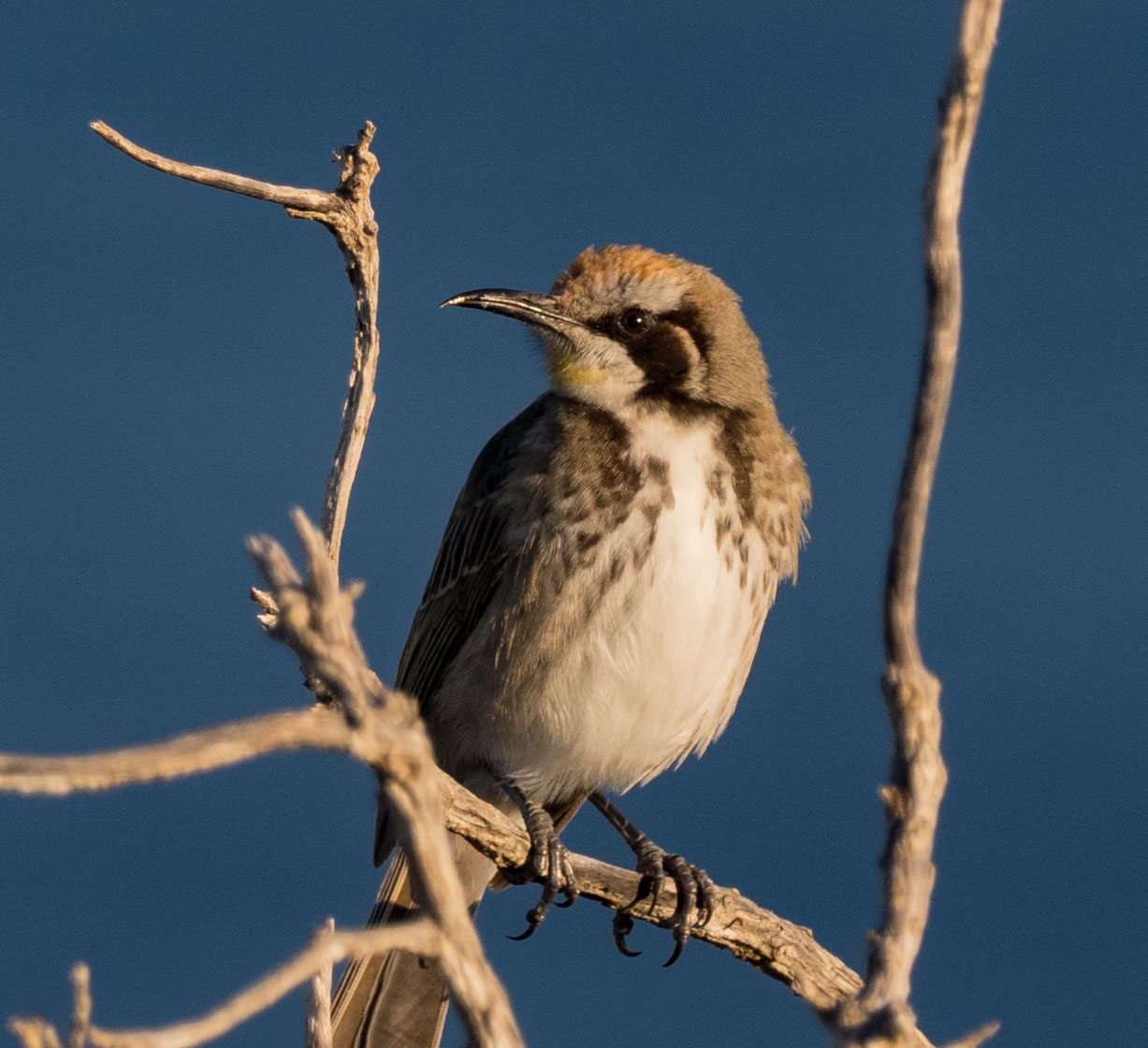
The nearby coastal heaths provide a striking contrast to our home forest environment.
The vegetation is low-growing, mostly less than a metre tall, and includes many species of shrubs and forbs that are quite unique. Even those species that do grow in both heath and forest environments, such as Banksia serrata, can be almost unrecognisable when growing on the windy, exposed heaths of Ben Boyd and Nadgee.
Greencape, looking south, with Point Hicks (and the NSW-Victoria border) in the distance
The 'South Coast Heaths' represent a distinctive vegetation class and are home to several endangered species, including the Eastern Ground Parrot and the Eastern Bristlebird.
This is also the environment in which the Tawny-crowned Honeyeater is found.
During a brief visit to Green Cape yesterday, we were again struck by the presence of these birds. They are not a rare species, but we have never seen one at home. And yet Green Cape is just 10km away, 'as the bird flies' ... (quite a bit longer by road).
Tawny-crowned Honeyeater (Glyciphila melanops) - a sub-adult, still with the yellow throat feathers of its juvenile plumage.
Tawny-crowned Honeyeaters are considered elusive birds, spending much of their time on or near the ground. And in the dense shrub layer of a coastal heath, that usually makes them difficult to spot. Luckily (for us), they also use projecting branches as perches on occasion, as this one was doing yesterday in the late afternoon sun.
The same individual, still taking in the ocean view ... and the warm sun.
Tawny-crowned Honeyeaters feed on nectar and insects. So do many forest birds. Yet, for whatever reasons, these honeyeaters are clearly heathland specialists.
In stark contrast is the second honeyeater species we watched sharing the same low shrubs.
New Holland Honeyeater (Phylidonyris novaehollandiae) - adult
New Holland Honeyeaters are common in heath, yet they are clearly quite adaptable to other habitats. They are regular summer visitors to our home forest and are also familiar birds of bushland, parks and gardens throughout Victoria and eastern NSW
They are predominantly nectar feeders. The bright yellow around the bill of the bird shown here is not feather colouring, but rather a mass of pollen grains!
Finally, a couple of the other residents out and about during our brief visit.
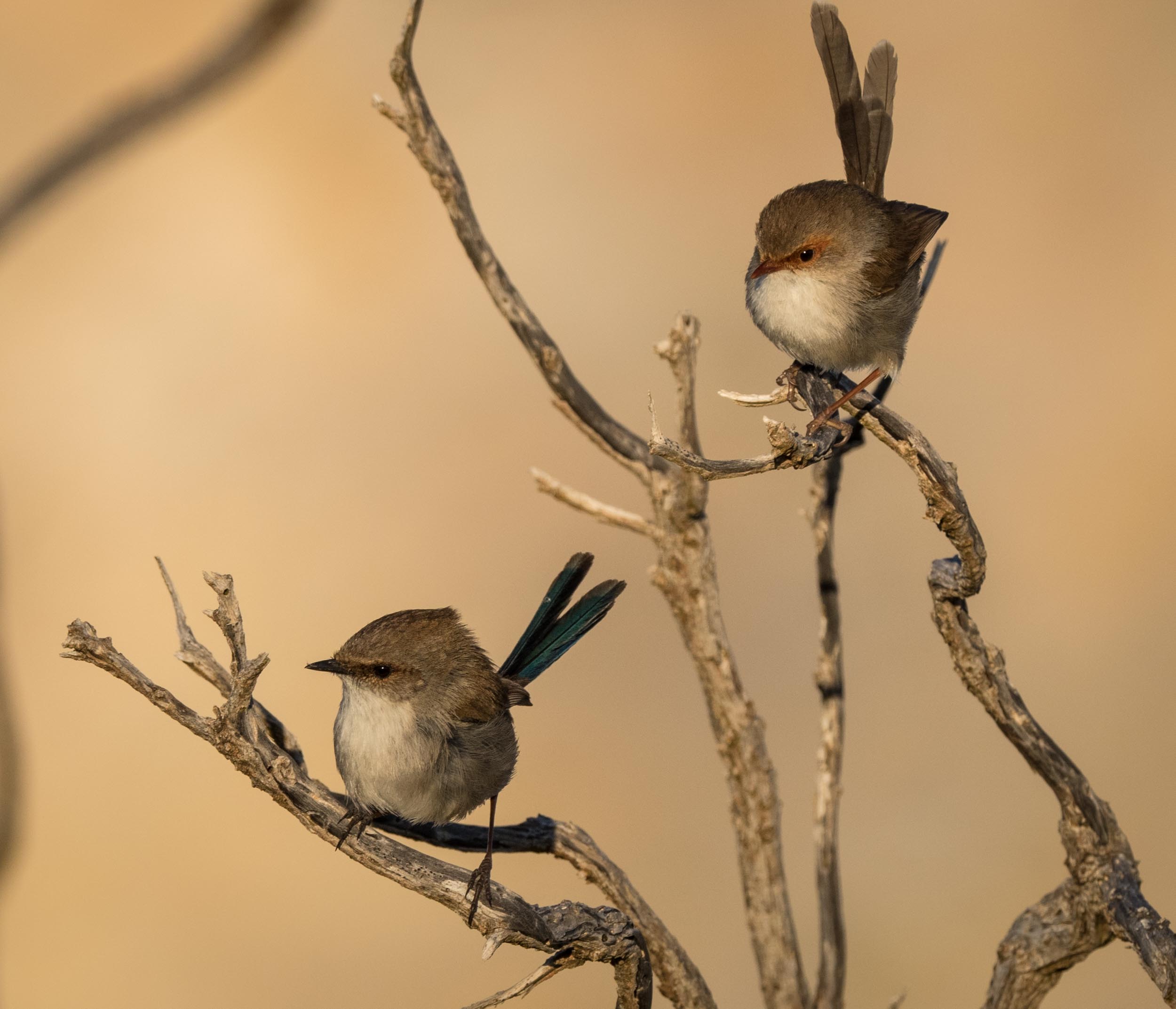
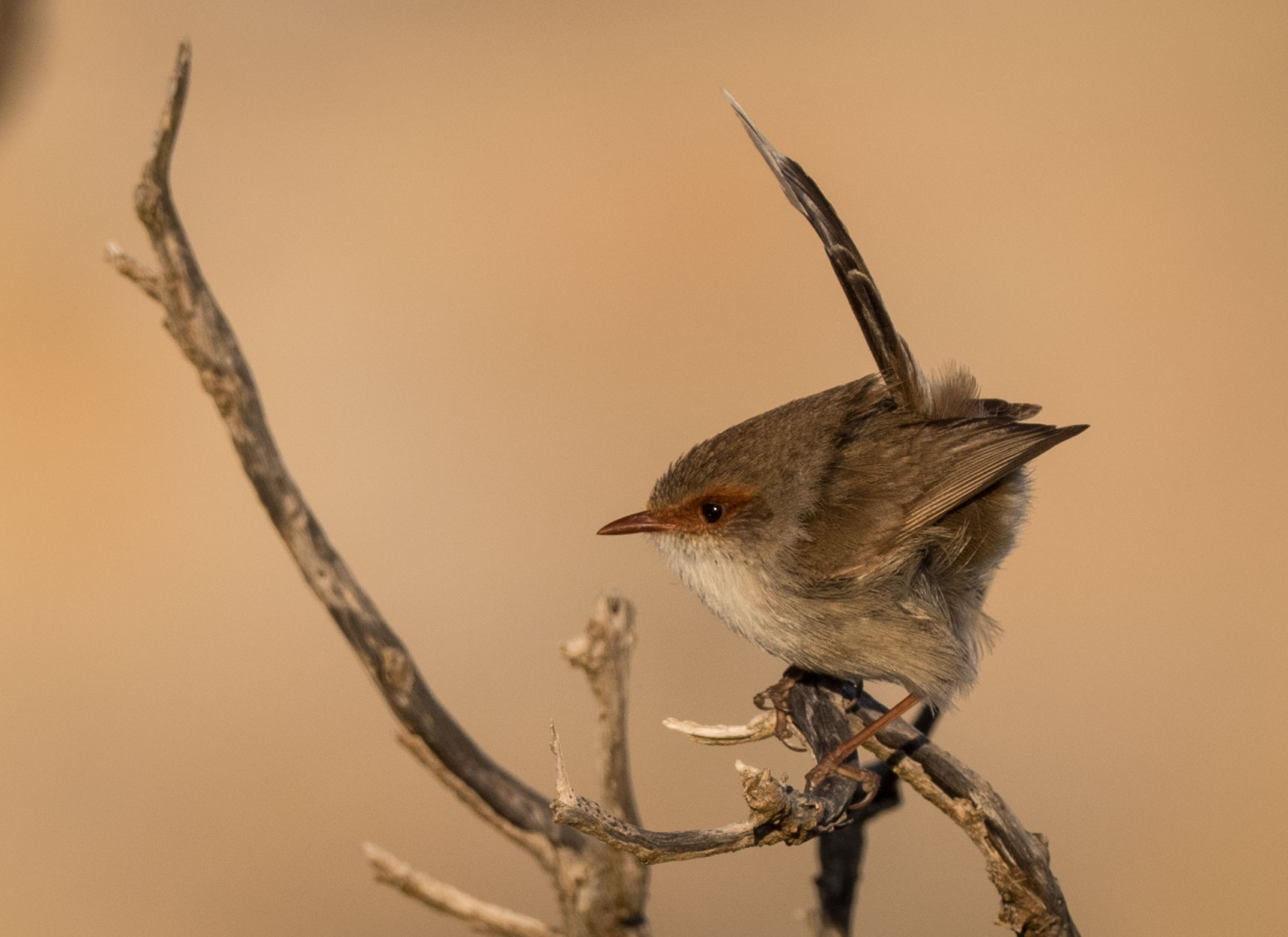
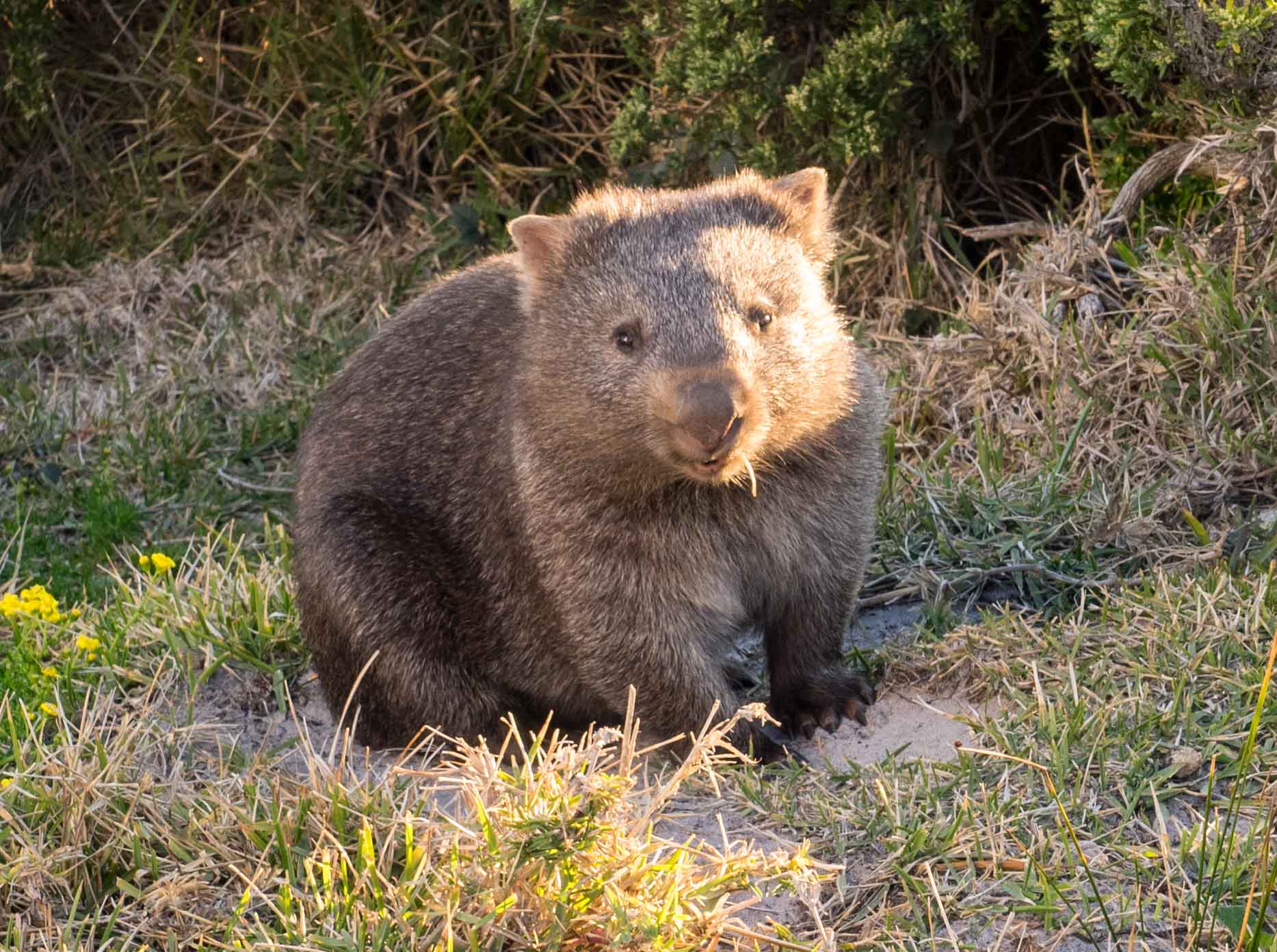
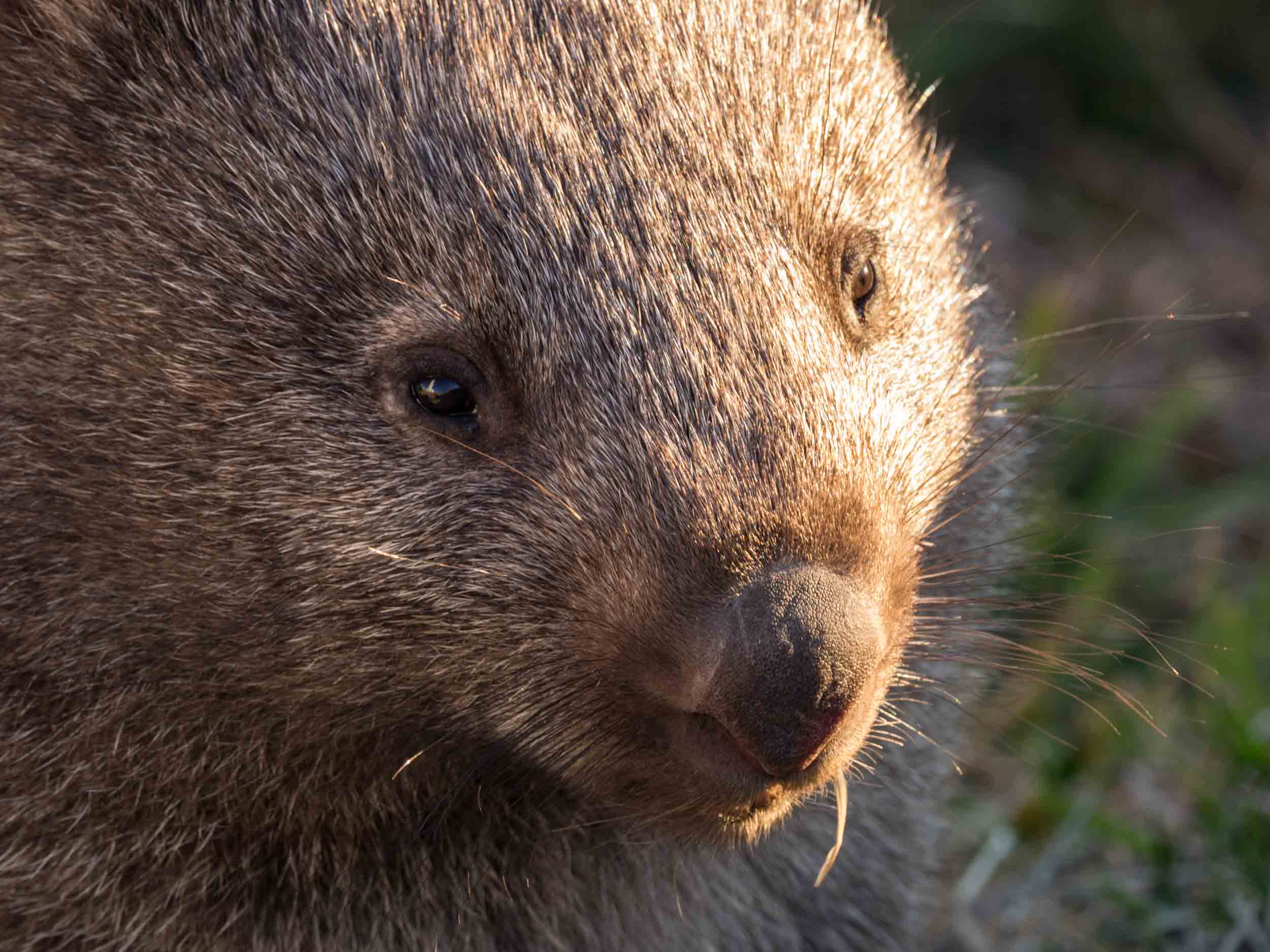
The small area around the lighthouse is home to more wombats than we've ever seen, anywhere! As the afternoon wore on, more and more were emerging from burrows to feed in the open.
Click here for NSW National Parks information about South Coast Heath communities





